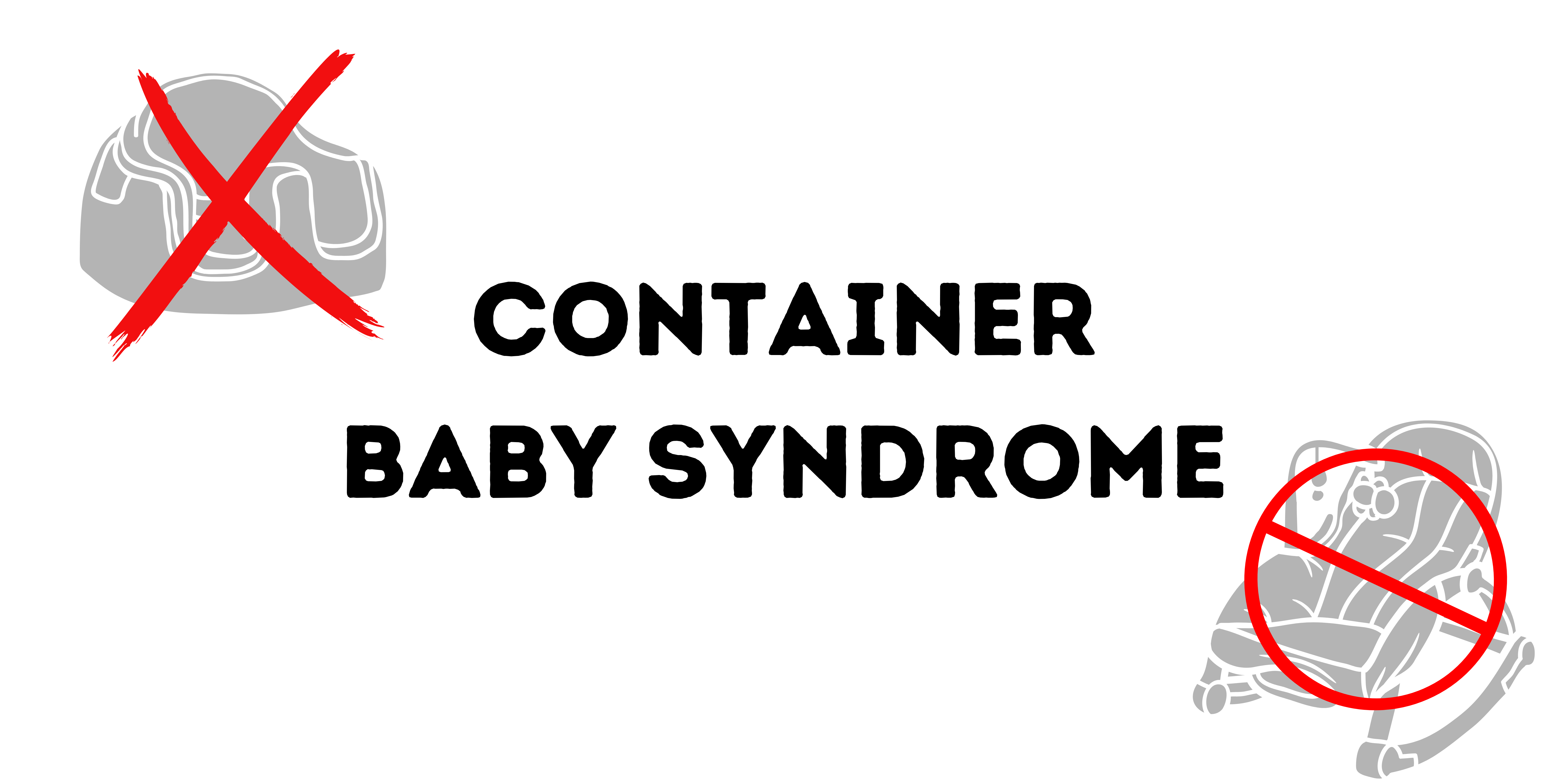Have you heard of container baby syndrome? Container baby syndrome is used to describe babies that spend too much time in “containers” such as seats, swings, highchairs or other equipment that “contain” or limit movement. Don’t worry, container baby syndrome is preventable! Wear or carry your baby, play on the floor, and supervised tummy time are all great activities. If you do use a container, the National Association of Physical Therapists recommend no more than 15 minutes 2 times a day. Most importantly, use age appropriate containers and use them for their intended purpose.
Babies’ brains double in the first year of life. They collect and process information from their environment and play to help brain development for social and emotional learning and problem solving. Play not only supports brain development but physical development as well. Grabbing toys and swinging their arms and leg around helps to build muscles needed to meet motor milestones such as holding their head up, rolling over, crawling, standing, and walking.
Seats, swings, highchairs or other equipment that “contain” or limit movement may prevent babies from developing the necessary muscles needed to meet milestones. Other examples include car seats, saucer chairs, and strollers. Babies that spend too much time in containers can develop physical conditions or motor delays including:
- Misshapen or flat head (plagiocephaly)
- Facial asymmetry
- Head turned to one side from tight neck muscles (torticollis)
- Decreased strength and coordination
- Delayed motor milestones
Some researchers have also begun linking container baby syndrome to other things such as difficulty with age-appropriate play, problems with vision and hearing, or delayed speech or cognition. Other containers that are designed to help babies reach milestones may also cause delays or even deformities. The use of jumpers and walkers has led to an increase of hip deformities and calf tightness due to bearing weight in an unnatural position before their muscles were ready to support them in that position.

A recent survey reported that 70% of parents said their baby spent more than 5 hours a day in a container. Others estimate that babies spend an average of 8 hours a day in a container. While to some that may not seem excessive, what is too much time? The National Association of Physical Therapists recommend no more than 15 minutes 2 times a day in a container. Most importantly, use age appropriate containers and use them for their intended purpose. For instance, only use car seats in the car and not for sleep.
Newborns should be held, worn, or placed on their backs in a crib or bassinet. Supervised tummy time is important for development of core strength and coordination. Once babies can hold their head up without support (about 4 months old), you can consider if use of containers such as highchairs, supportive seats such as Bumbos, or jumpers for short amounts of time is right for you. Conservative recommendations suggest to wait until babies can sit unsupported (about 6 months) to use jumpers or highchairs.
Regardless of when you choose to use containers, here are some practical tips:
·Never leave babies unsupervised in containers
·Use the safety belt or harness to prevent injuries
·Use containers when needed for safety such as car seats in cars
·Consider using a container when cooking or taking a shower
·Use age appropriate containers
Lastly, talk to your healthcare provider if you are concerned about the growth and development of your baby or have questions about containers.
Written by: Courtney Wallace, DNP, RN, CPHQ








